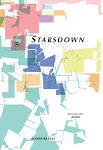Notes from Los Angeles



Very pleasantly surprised by Ecstasy, the current show at The Geffen Contemporary. I'm ambivalent about the current trend in curation to title, market and organize shows such that they stand a chance of drawing the kind of audience that would usually steer clear of modern art. As an outgrowth of the corporatization of the museum, I'm right well repulsed. But as an attempt to present exciting, stimulating and disturbing art to a wider audience, I'm down. There has to be some way, though, to do this without curation-as-pandering--for if there were, on free night in the museum, scores of MDMA-victims emptily examining the paintings and sculptures, the primary affect of the show was far from ecstatic or jubilant. This, it's worth noting, from someone who would rather go to a Kevin Costner double-feature than consume a psychedelic: 98-percent terror, 2-percent bliss. Yes, despite the frequent exclamations of "woah, man, that's weird," Takashi Murakami's big tryptich was more Hiroshima than Haight-Ashbury. Vertigo and not elation or transport was what the show continuously delivered.
Most worth mentioning is Franz Ackermann's installation "Sky Shop--Lobby." It gave me exactly what I've hoped to find on this trip, a visual rhetoric for thinking the flattened, low-depth city which eludes any total concept. Ackermann encyclopedializes a great number of the devices of twentieth-century art--the geometrics of conceptual art, the big gestures of Ab-Expressionism, the flat acrylics of pop-art and minimalism, the return of the figure, photocollage. I especially like the way that geometrical drawing explodes into the infolding and unfolding painted (bodily) and photographed (architectural) spaces. As much as this article criticizes the apolitical apparatus with which Ackermann surrounds his installations, I'm not as convinced that I should listen to him (Ackermann). For my money, the installation gives a symphonic, total vision of urban life, from the ideological-conceptual substrates of the drawings to the literal imagery of the photographs to the emotionality/viscerality of the swirling acrylics. Even if Ackermann thinks of himself as an uncritical and detached flaneur, a tourist, I'm not sure that his vision isn't more interventive and transformative than he thinks it. There's a keen sense of the emotional and mental (psychogeographical) terrain of the city and the possibilities (sort of) for cutting and pasting and reconstituting these spaces to make them more hospitable to, umm, life. In any case, the installation challenged me to think and see space differently, to push against the resistances to vision with which any complex visual cityscape presents me.
Also wonderful: Eija-Liisa Ahtila's video tryptych "Talo/The House." I'm not sure that I've ever seen a more effective visual portrayal of psychosis, of the multi-channel experience of time and space that accompanies a psychotic break, where "a boat in the harbor is everywhere boat that has ever crossed the harbor" (probably misquoting), and where, like Borges's "Funes the Memorious," every moment in time is simultaneous, richly and fully present. This reminds, of course, of the kinds of psychological and literary moments that Deleuze and Guattari focus on in Anti-Oedipus but it also reminds of the pain and paralysis (which they tend to overlook) that comes with this. The actress in this piece is great, and so, too, is the writing, all of which suggests that Ahtila would probably make a great feature film.
The big room with Amanita Muscaria growing from the ceiling? Not so much.
_________________________
Plus, I saw these houses yesterday (above).


No comments:
Post a Comment